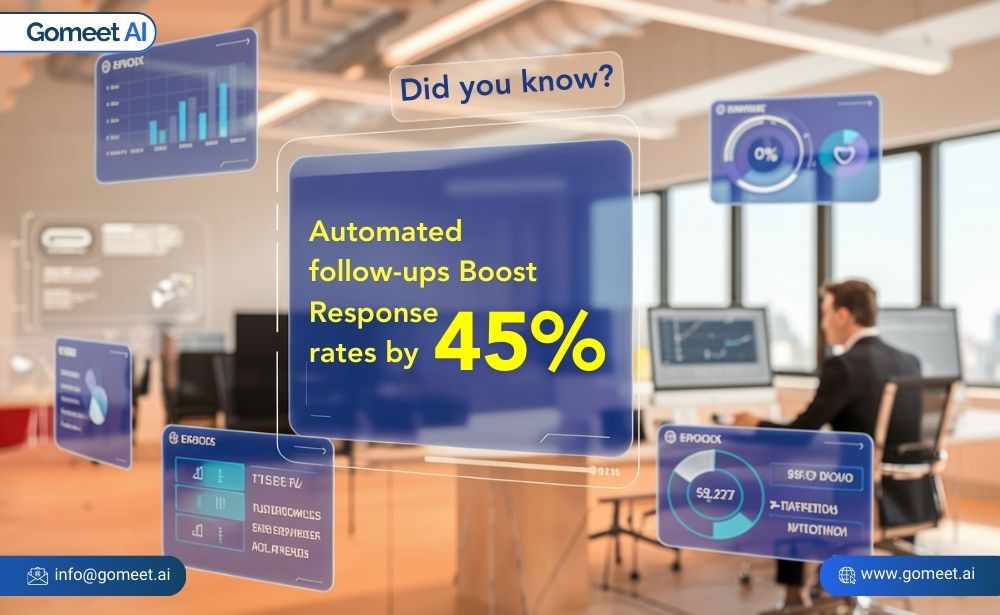Imagine a world where you never close a lead because of a missed follow-up. Where every potential customer feels prioritized, and your sales team is focused on closing deals, not chasing cold contacts. This is the reality that Email follow-up automation software creates. In the fast-paced world of sales, staying top-of-mind with potential clients is essential. However, it’s not easy to keep up with the volume and timing of follow-ups manually. According to a study, 80% of sales require 5 follow-up calls after a meeting, yet 44% of sales reps give up after just one follow-up.
The impact of a well-timed follow-up can’t be overstated, and automation tools have stepped in to ensure that sales reps never miss that crucial second, third, or even fifth email. This blog will explore the transformative power of Email follow-up automation software, sales lead automation, and AI scheduling software in driving up sales conversions by keeping your brand in front of the right people, at the right time.
1. Why Follow-Up Emails Matter in Sales Conversions
In the B2B sales process, a follow-up email isn’t just a courtesy; it’s often the deciding factor in whether or not a lead moves forward in the sales funnel. Follow-up emails nurture leads, keeping prospects engaged and reminding them of your offer. The reality is that potential customers are often busy, and initial outreach can easily slip through the cracks. Here’s where follow-up emails step in to “nudge” them back to you.
Without follow-up automation, sales teams face several issues:
- Missed opportunities due to delayed or forgotten follow-ups.
- Lower response rates when follow-ups aren’t timely.
- Inconsistent outreach that affects lead nurturing.
Case in Point: Sales teams using automation tools for follow-ups see an 80% increase in response rates compared to those relying on manual follow-ups.
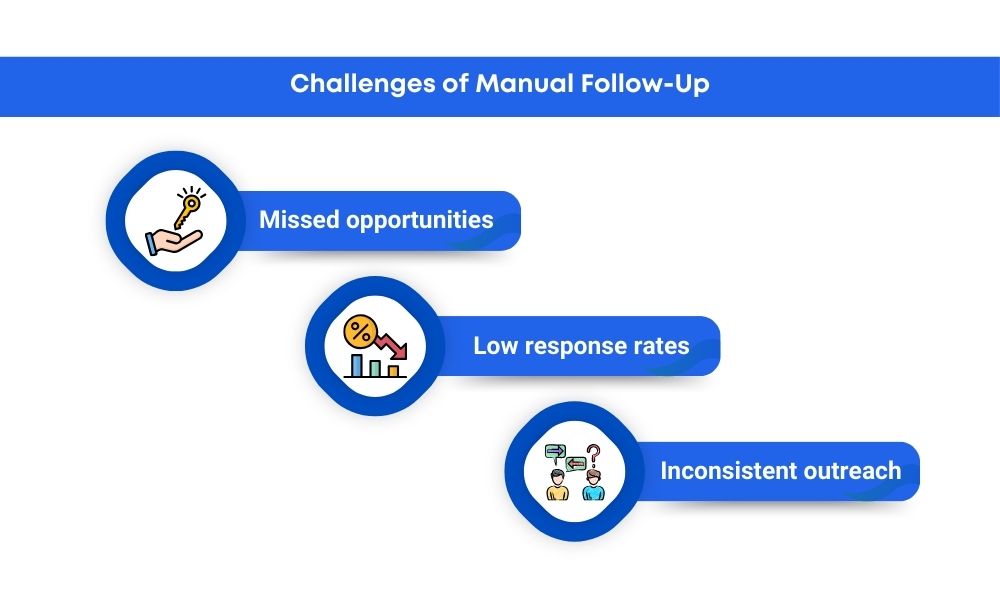
2. Understanding Email follow-up automation software
So, what exactly is Email follow-up automation software? In simple terms, it’s a system that automatically sends follow-up emails based on predefined triggers, such as a certain period after initial outreach or if a recipient hasn’t replied. These automated follow-ups are personalized, timely, and strategic.
With tools like sales lead automation, this process becomes even more seamless. Sales lead automation tracks and scores leads, providing key insights into lead quality. When combined with follow-up automation, these tools ensure that sales reps aren’t just reaching out regularly but are doing so in a targeted, data-driven manner. This combination of automation ensures that every potential lead receives the right level of attention.
3. How Sales Lead Automation Enhances the Follow-Up Strategy
Sales lead automation serves as the backbone of an effective follow-up strategy. With lead automation, sales teams can:
- Track and prioritize leads based on engagement, past interactions, and scoring metrics.
- Focus on high-quality leads by automating lower-priority follow-ups, ensuring each lead is nurtured according to their position in the funnel.
- Deliver timely, personalized outreach by setting up automated follow-ups at optimal times based on engagement data.
For instance, if a lead opens a particular product brochure via email, an automated follow-up can be triggered within 24 hours, thanking them and suggesting further resources. This enhances the relevance of each follow-up, keeping prospects engaged and moving through the sales funnel.
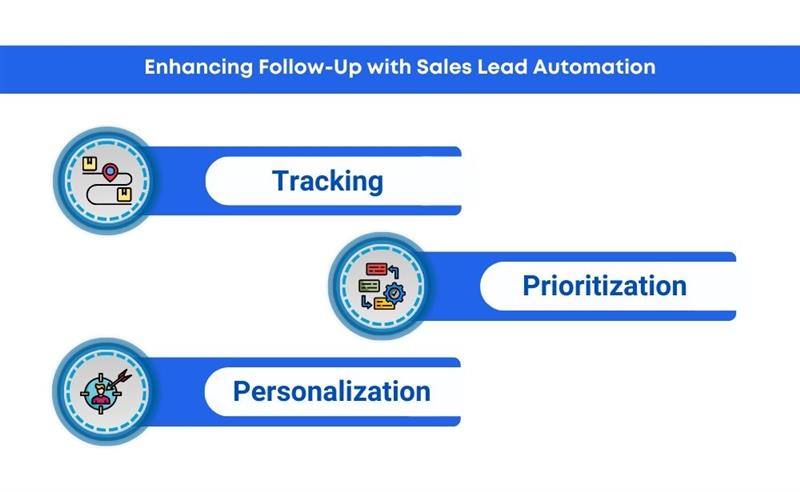
4. Leveraging AI Scheduling Software for Effective Follow-Ups
AI scheduling software is a powerful tool for sales teams that struggle to optimize follow-up timing. With AI-powered scheduling, follow-ups are no longer sent at random times. Instead, AI scheduling optimizes send times based on historical engagement data and lead behaviour patterns, ensuring that follow-up emails land when leads are most likely to see them.
Benefits of AI scheduling software include:
- Reduced manual scheduling: AI eliminates the need to manually plan follow-ups.
- Fewer missed meetings: AI tracks engagement and ensures timely follow-ups for critical interactions.
- Higher response rates: Studies show that emails sent at the right time increase open rates by 45%.
For instance, a sales team using AI scheduling noticed that their response rate jumped by 40% after implementing optimal send times based on lead behavior.
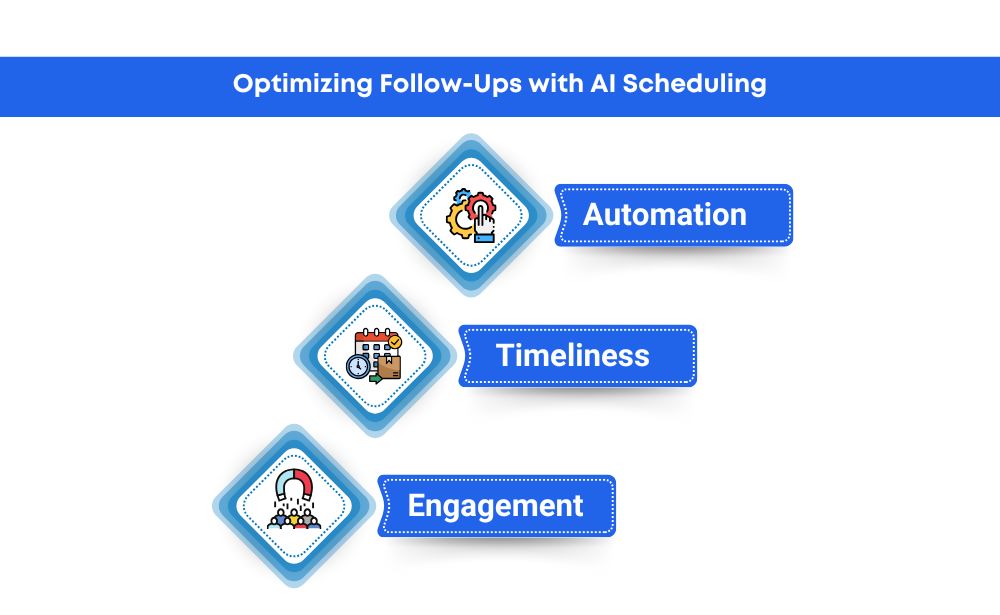
5. Benefits of Automating Email Follow-Ups in Sales Prospecting
Automating follow-up emails offers numerous advantages for sales prospecting, including:
- Higher response rates: With consistent, well-timed follow-ups, response rates improve significantly.
- Improved efficiency: Automated follow-ups free up valuable time for sales reps to focus on high-priority tasks.
- Personalization at scale: Automation tools allow for personalization based on lead data and engagement history, which feels relevant and customized to each prospect.
- Enhanced lead scoring: Automated follow-ups can assess engagement levels, helping sales teams to prioritize the most promising leads effectively.
In a report by HubSpot, companies that use automated follow-up emails experience a 10% to 20% increase in revenue due to improved lead nurturing and higher conversion rates.
6. Case Study: How Sales Prospecting Software Boosts Conversions
To put the benefits into perspective, let us look at how a hypothetical company, “TechNova,” used sales prospecting software with automated follow-ups to boost their sales conversions.
Scenario: TechNova, a software solutions provider, struggled to maintain contact with leads due to a lack of consistent follow-ups. The team implemented a sales prospecting tool with email follow-up automation software, combined with AI scheduling software to optimize timing.
Process:
- Sales lead automation scored and prioritized leads based on engagement.
- Automated follow-ups were scheduled at optimal times, ensuring timely outreach.
- The team tracked open and response rates to fine-tune their follow-up sequence.
Results: Within three months, TechNova reported a 35% increase in conversions and a 50% reduction in time spent on manual follow-ups. The automated system ensured consistent communication, and high-priority leads were nurtured effectively, leading to higher close rates.
7. Getting Started with Email follow-up automation software
Implementing Email follow-up automation software doesn’t have to be complicated. Here are some practical steps to get started:
- Choose the Right Tools: Select a sales prospecting software that offers robust automation features and integrates seamlessly with your CRM. Top choices include tools like HubSpot, Salesloft, or Outreach.io.
- Integrate with Your CRM: This ensures data flows smoothly between your sales automation tool and CRM, making it easier to track leads and manage follow-ups.
- Develop a Strategic Follow-Up Sequence: Create an automation sequence that triggers follow-ups at various stages of the sales funnel. Include value-add content, thank-you, and personalized offers.
- Leverage AI Scheduling: Use AI scheduling tools to optimize timing and improve response rates.
- Monitor and Optimize: Regularly assess open rates, response rates, and conversion metrics. Adjust your automation strategy based on what’s working.
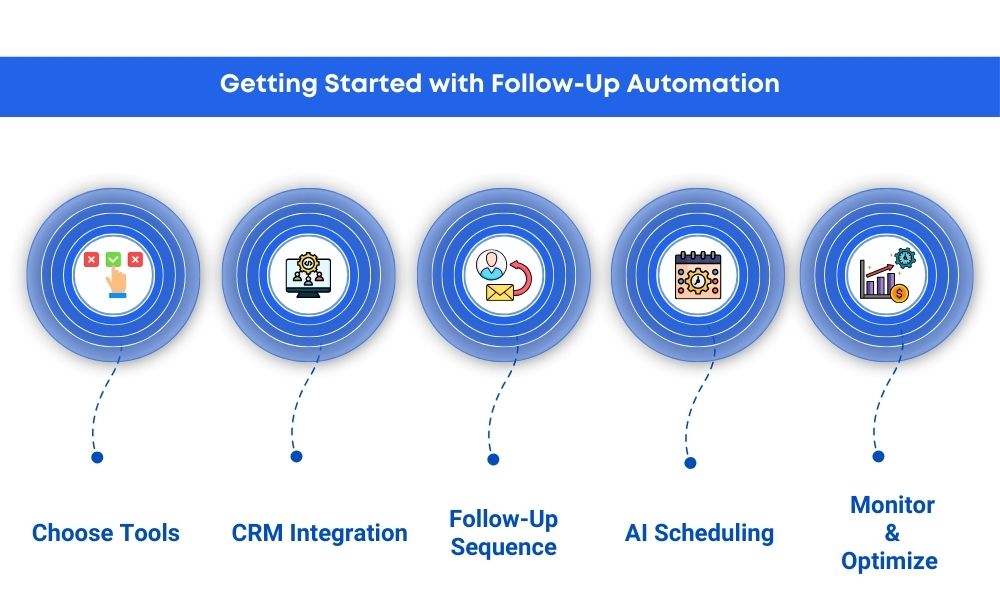
Conclusion
The journey from lead to conversion is often longer than anticipated, but Email follow-up automation software makes it significantly smoother. By using tools like sales lead automation and AI scheduling software, sales teams can increase efficiency, save time, and ultimately improve conversion rates. The data-driven insights provided by automation ensure each follow-up is relevant, timely, and personalized, making it more likely to resonate with potential clients.
In today’s competitive landscape, companies that aren’t utilizing follow-up automation risk falling behind. If you’re looking to enhance your sales process, consider exploring automation tools that can turn your follow-ups into conversion-driving interactions. Don’t let missed opportunities hold you back—start automating your follow-ups today and see the difference it can make in your sales success.

